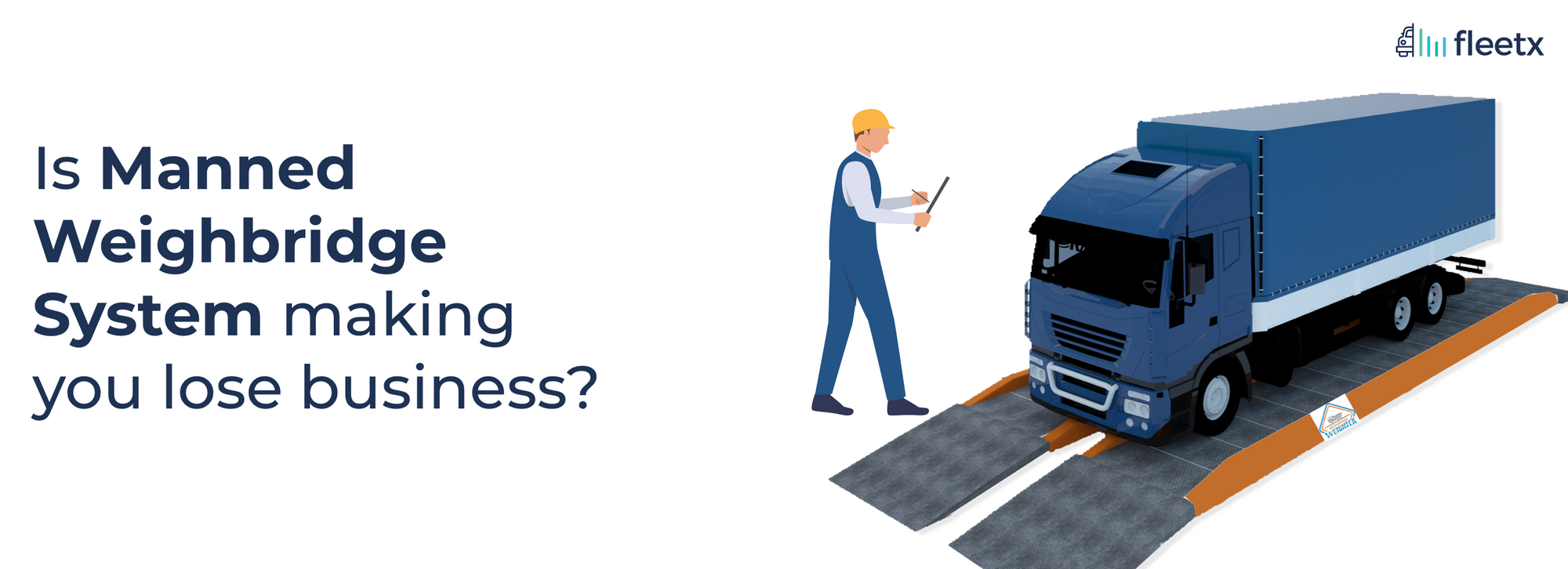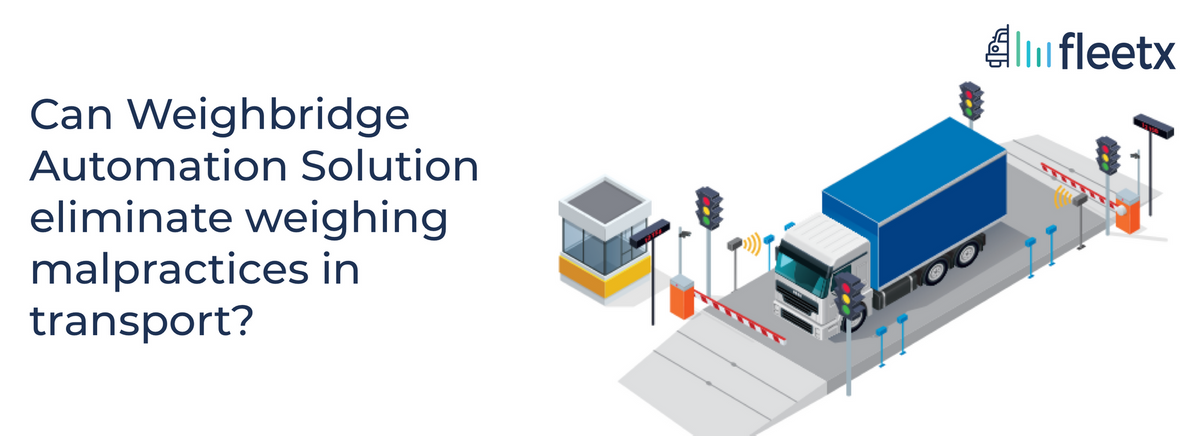
Overview
Businesses depend on Weight Stations to weigh goods that are run by booth operators. Maintaining its weight station is an expensive affair and weight stations are a common ground for weighing malpractices like underweighting, bribery, and theft. The manned weighbridge system that is commonly used across the world for weighing goods can be irregular and incur a huge operating cost to companies.
Process of Commercial weighing of goods
When we talk about weighing and transportation of goods in logistics we usually refer to large-scale operations involving goods weighing in thousands of kilograms transported by a fleet of vehicles. To maintain accurate goods, there is a common due process followed by every company or the other that produces and transports goods.
Weighing goods before transportation, by the seller
The weight of the goods is measured by the seller before dispatching it to the buyer. A final invoice slip is generated by the seller before transporting the goods which serve as documentation certifying the weight of goods being sent.
Weighing goods before receiving for audit, by the buyer
Once the goods arrive at the buyer’s end, they are required to cross-check the weight and quality of goods before receiving them. This is either done within the receiving facility or done at a third-party weighing station equipped to weigh commercial shipments of goods. At the receiver’s end,
- Vehicles are first measured in the state they arrive at, along with the goods. The total weight of the shipment is calculated.
- Post this, goods are offloaded and the weight of the vehicle without goods is calculated.
[Total Weight of vehicle with goods - Weight of vehicle without goods = Final weight of goods]
The final weight of goods is matched with the invoice from the seller’s end. If the weight and conditions of goods are acceptable, the goods are successfully received. In case when the weight of goods does not add up or is not within the acceptable margin of error, it leads to weight disputes resulting in either return or freight adjustments that could lead to a revaluation of the consignment.
Weighing goods before receiving for audit, by the buyer
To measure such large quantities of goods, commercial manned weighing stations are used. These weighing stations are either equipped with manual, semi-automatic, or automatic commercial weighbridges that are capable of measuring heavy vehicles with goods. In India, these weighbridges are colloquially referred to as Dharam Kanta (धरमकाँटा) for decades. Their name translates to a place to measure the weight of goods with utmost honesty which is very crucial when we talk about weighing goods worth crores!
These Weighing Stations equipped with Manual operated Weighbridges or Manned Weighbridges form a system that requires a weight booth and a booth operator. The booth operator is responsible for registering the vehicle details either manually or electronically. These include details like:
- Vehicle entry and exits
- Vehicle registration number
- Details of the driver
- Sender details
- Invoice details
- Other details related to the goods
Operating manned weighbridges
Manned Weighbridges are equipped with a large platform fitted with a digital reading meter that displays the weight. Vehicles, mostly trucks with goods are loaded on the platform, their weight is captured by the scale and displayed on the meter.
The booth operator is responsible for the management of the entire weighing operation for vehicles that enter and exit the weighing stations. Additionally, weight stations are either part of a company’s logistics or are owned by third-party commercial service providers.
Problems with Manned Weighbridge System
The most significant problem with the Manned Weighbridge System is the fact that they require manual intervention. They are dependent on an individual which increases the chances of human error and malpractice, resulting in financial loss for companies that makes the weighing process less transparent. There are several other issues with Manned Weighbridge Systems as listed below:
Managing weight stations require heavy capital investments and increase operational cost
Manned Weighbridge Systems are expensive and require heavy upfront fixed capital investment. Additionally, maintaining and operating a Weighing Station incurs additional expenses that include the cost of setting up a weighing booth, employing additional workers for managing the weighing terminal, and other additional costs which drive up the cost of doing business.
Manual weighbridges have a heavy reliance on booth operators to oversee operations
The Manned Weighbridge system requires a booth operator who oversees the entire process. Companies become extremely reliant on these operators to oversee weighing operations for goods with extremely high quantity and monetary value. This creates an opening for operators to indulge in bribery, theft, and other related malpractices causing irregularities and financial losses for the company.
Manual weighing stations lack transparency in the weighing process of goods
In manned weighbridge systems, booth operators are solely responsible for weighing and maintaining records for goods entering and exiting the facility. This causes poor transparency in the process. As a result, malpractices at the micro-level could go undetected for a long time resulting in compounding financial losses to the company.
Manual weighbridge systems are riddled with poor time and resource management for any logistics operator
Weight Stations deal with a large number of vehicles every day. Manual registration and weighing lead to long queues and overcrowding of incoming vehicles at the station. This further leads to delays at the weighing station reducing the operating efficiency of the entire supply chain process.
The manual process of weighing goods lacks security and are prone to frauds and malpractice
Due to the lack of transparency and centralization of operation in the hands of driver and booth operator, the manual weighing process is riddled with massive security concerns. Supply-chain managers can’t oversee every step of operation in weighing which gives rise to frauds and malpractice in weighing of goods which can reflect poorly on the business as well as the operation managers.
Conclusion
As businesses and operation move towards improving the efficiency of operations through automation, the traditional process of weighing using manned weighbridge systems are dragging them backward. The inefficient and improper weighing process is a growing concern that operation managers across the world are worried about. There is a need to automate the weighing process through weighbridge automation solutions if businesses are serious about improving their operating efficiency. To find out how your business can successfully automate the process, check out our piece of fleetx’s weighbridge automation system.


